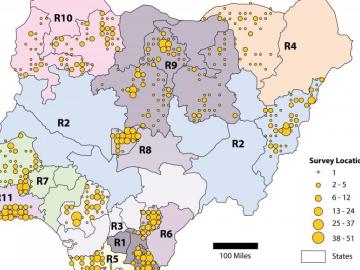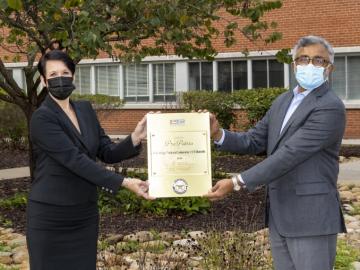
Filter News
Area of Research
- Advanced Manufacturing (10)
- Biological Systems (1)
- Biology and Environment (21)
- Building Technologies (1)
- Clean Energy (130)
- Climate and Environmental Systems (4)
- Computational Engineering (1)
- Computer Science (10)
- Energy Sciences (1)
- Fusion and Fission (5)
- Fusion Energy (11)
- Isotopes (4)
- Materials (105)
- Materials for Computing (5)
- National Security (17)
- Neutron Science (51)
- Nuclear Science and Technology (33)
- Nuclear Systems Modeling, Simulation and Validation (2)
- Quantum information Science (6)
- Supercomputing (69)
- Transportation Systems (1)
Date
News Topics
- 3-D Printing/Advanced Manufacturing (43)
- Advanced Reactors (21)
- Artificial Intelligence (20)
- Big Data (18)
- Bioenergy (21)
- Biology (5)
- Biomedical (26)
- Biotechnology (3)
- Buildings (1)
- Chemical Sciences (5)
- Clean Water (7)
- Climate Change (10)
- Composites (3)
- Computer Science (74)
- Coronavirus (23)
- Critical Materials (2)
- Cybersecurity (9)
- Decarbonization (1)
- Energy Storage (29)
- Environment (48)
- Exascale Computing (5)
- Frontier (3)
- Fusion (18)
- Grid (13)
- High-Performance Computing (3)
- Isotopes (9)
- Machine Learning (13)
- Materials (2)
- Materials Science (57)
- Mathematics (2)
- Mercury (2)
- Microscopy (13)
- Molten Salt (3)
- Nanotechnology (23)
- National Security (2)
- Neutron Science (48)
- Nuclear Energy (48)
- Physics (19)
- Polymers (9)
- Quantum Science (24)
- Security (5)
- Space Exploration (6)
- Summit (26)
- Sustainable Energy (32)
- Transformational Challenge Reactor (5)
- Transportation (27)
Media Contacts

Oak Ridge National Laboratory scientists helped count the population of Nigeria – all without leaving the lab.

Irradiation may slow corrosion of alloys in molten salt, a team of Oak Ridge National Laboratory scientists has found in preliminary tests.

Scientists at Oak Ridge National Laboratory and the University of Tennessee designed and demonstrated a method to make carbon-based materials that can be used as electrodes compatible with a specific semiconductor circuitry.

Led by ORNL and the University of Tennessee, Knoxville, a study of a solar-energy material with a bright future revealed a way to slow phonons, the waves that transport heat.

Soteria Battery Innovation Group has exclusively licensed and optioned a technology developed by Oak Ridge National Laboratory designed to eliminate thermal runaway in lithium ion batteries due to mechanical damage.

Four research teams from the Department of Energy’s Oak Ridge National Laboratory and their technologies have received 2020 R&D 100 Awards.

ORNL has received a Pro Patria award, the highest recognition granted by the Tennessee Employer Support of the Guard and Reserve committee, in recognition of ORNL’s outstanding support of employees who are reserve members of the U.S. Armed Forces, known collectively as the Reserve Component.


Rufus Ritchie came from Kentucky coal country, a region not known for producing physicists.


